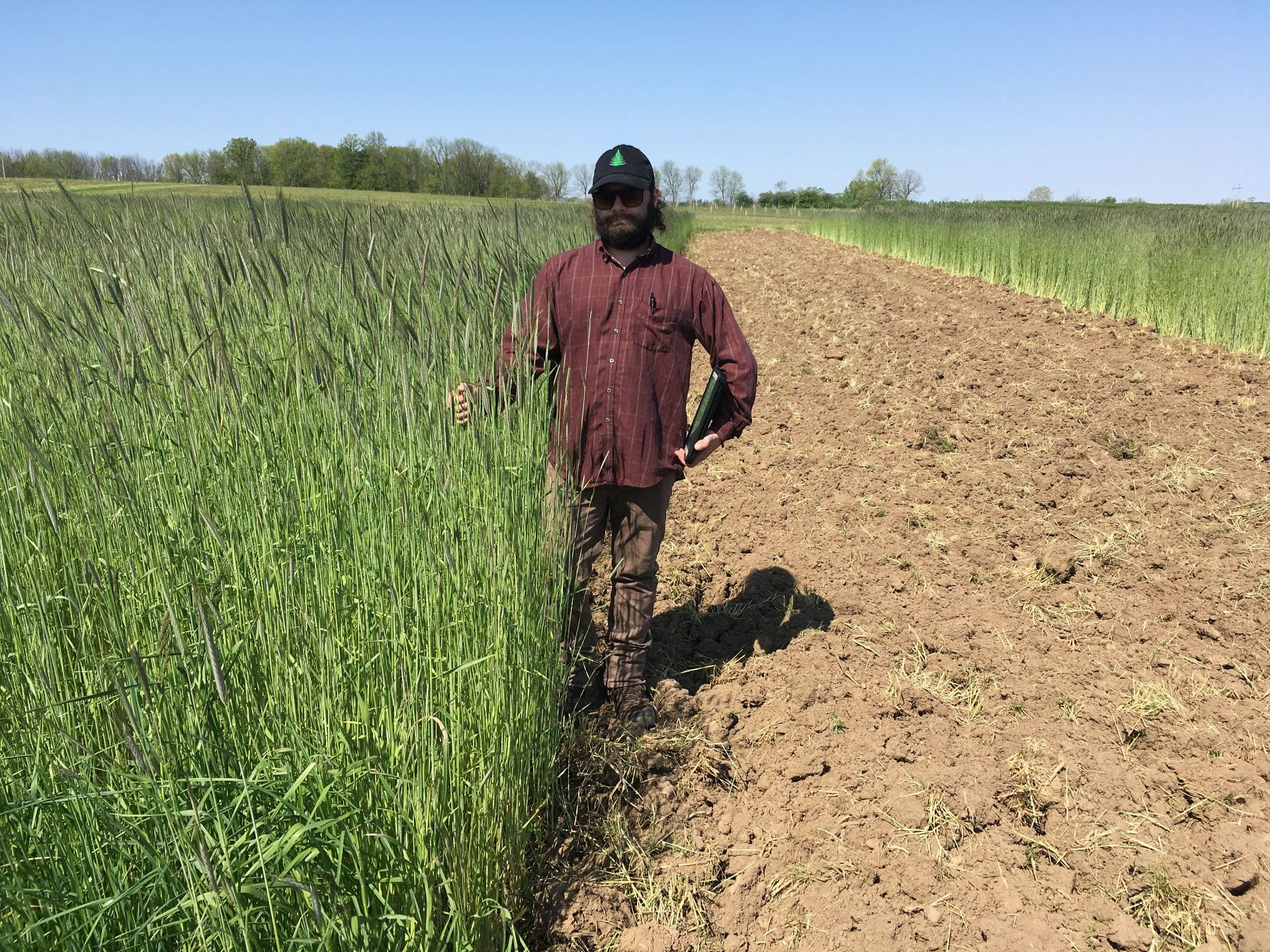
Our next series of posts looks at a 2021 field trial by NYSIPM’s Bryan Brown, Marcus Lopez, and Abby Seaman. For full details, read their complete posts throughout the season.:
What’s the best way to manage weeds in organic winter squash? Many farmers use black plastic mulch. Others cultivate. And small-scale farms may spread straw mulch by hand. There’s also interest in using roller-crimped rye as a mulch.
Each option affects weeds but has different impacts on other pests and on soils. Our team compared methods side-by-side, repeating each system four times: Each plot was scouted for diseases and insect pests (with a plan that half of a plot would be sprayed with OMRI-approved products IF over threshold; the other half would not be sprayed.) Knowing the results are dependent on the weather, they’ll be repeating the experiment in 2022.
To have each system, or treatment, be as realistic as possible they chatted with squash farmers, educators, and consultants to come up with weed management treatments:
- Direct seeded squash cultivated with sweeps+fingers 3 times, then just sweeps at layby.
- Transplanted squash into black plastic with drip irrigation. One between-plastic cultivation.
- Transplanted squash into bare soil, which will be mulched with straw once the squash are at least 6” tall.
- Transplanted squash into roller-crimped winter rye that had been zone-tilled with a single shank in March to alleviate compaction.
Weed reduction Options:
One method was ROLLER-CRIMPING, a time-critical method of growing, then killing, a cover crop–in this case, winter rye, a vigorous cover crop that gets rolled down for mulch. When roller-crimping rye for mulch, timing is critical. Too early, and the rye can re-grow after rolling. Too late, and you risk the rye producing viable seed, which can become a weed problem. It is generally advised to roller-crimp rye towards the end of anthesis. (Anthesis stages can be determined using using Zadok’s growth scale.) They rated the rye at several spots throughout the field and aimed to crimp when the average Zadok stage was about 67, but a thunderstorm knocked off all the pollen tubes making it difficult estimate the stage! They ended up roller-crimping on June 1.
How Much Rye Biomass Do You Need for Weed Suppression? A lot. In New York, cereal rye biomass can hit levels of 3,500 lbs/A when unfertilized and 7,000 lbs/A with fertilizer. The team planted rye (cv Aroostook) on 9/17/20 at 168 lbs/A. They expected good soil fertility from the previous summer’s cover crop of sudangrass, but despite high tests of phosphorous and potassium, nitrogen was tied up in decomposition and wasn’t readily available.

In May, the rye put on some serious growth as shown above. By June 10, 2021, the rye seemed to falter and they hadn’t even planted squash yet. Next year… they’ll fertilize the rye, direct seed, and have no need to keyline plow…

What about BLACK PLASTIC? It’s commonly used in vegetable production, but has pros and cons. It’s extremely effective (their plastic mulch plots had almost zero weeds) and saves labor hours compared to straw mulch. Soil-borne pathogens stay away from plant leaves. The plastic traps moisture and nutrients, warms the soil, and reduces erosion and compaction as compared to cultivation. Of course, drip irrigation is a requirement, which makes fertigation an option, and without overhead irrigation, leaves stay dry which reduces diseases.
However, plants don’t benefit from rainfall and there’s the need for equipment and materials required. The plastic layer they used retails for over $5000 –a hefty investment for new farms. Plastic removal and disposal pose additional costs each year, though some growers can reuse it the following year in crops with similar spacing. And there are photo-degradable plastics available too. Of course, weeds will grow wherever they can sneak in, and require hoeing or mowing.
The bottom line: Black plastic mulch is extremely effective and efficient, but requires a higher initial investment, and generates plastic waste.

They didn’t forget STRAW MULCH! Spreading straw mulch is a great way for small scale farmers to manage weeds, but the presence of wheat or oat seeds presents a unique challenge. To encourage the grain to germinate prior to mulching, the team set their straw bales outdoors to get wet from March to June, flipping them once to terminate any vegetation growing from the top. However, this gave rise to a different pest, fungus, when bales were overrun with Coprinopsis atramentaria, the “inky cap mushroom”. This caused stained clothing, and respiratory irritation. It is recommended to wear an N95 mask when spreading straw bales, especially if they are moldy. They skipped using the second half of their moldy straw and bought new, dry bales which allowed a risk of winter wheat sprouting in the plots.


They applied the straw mulch at a rate of 9 ton/acre; about 600 small square bales per acre. 14 bales per 1000 ft².

This application rate created a thick layer of mulch that has been shown to be effective for the entire season. In addition to weed suppression, they found consistently measured higher soil moisture and lower soil temperatures under the straw mulch.
Stay tuned for insect pests and, later, the season wrap up!
